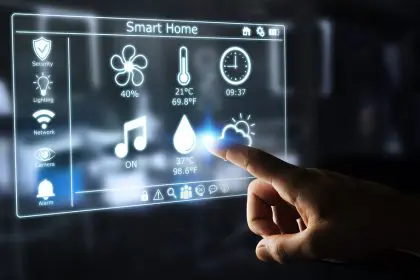Bipolar disorder presents unique challenges for those affected, but research increasingly shows that stigma surrounding the condition often creates additional hurdles that prevent individuals from accessing vital care. The disorder, characterized by distinctive shifts in mood, energy, and activity levels, typically emerges during late adolescence or early adulthood, making timely intervention especially critical.
Recent qualitative studies have identified three fundamental components of public stigma that impact those with bipolar disorder. These include negative stereotypes that mischaracterize individuals as dangerous or incompetent, prejudice resulting from emotional reactions to these stereotypes, and discrimination manifested through avoidance or mistreatment based on these prejudices.
The consequences of such stigma extend beyond social isolation. According to the 2021 Mood Disorder Survey conducted by The Harris Poll for the National Alliance on Mental Illness, a striking 84% of respondents identified perceived stigma as a significant barrier to pursuing treatment, while 61% reported experiencing differential treatment after disclosing their condition.
Self-stigma compounds challenges through internalized beliefs
Beyond external perceptions, research published in 2021 highlighted the detrimental effects of self-stigma, where individuals internalize negative public attitudes about their condition. This internalization process can lead individuals to accept stigmatized views of themselves as truth, severely compromising their ability to maintain their personal identity separate from their diagnosis.
The systematic literature review demonstrated that individuals with serious mental illness who internalized stigma experienced measurably worse clinical and functional outcomes compared to those who maintained more resilient self-perceptions. This self-stigma significantly reduces the likelihood of seeking professional help or adhering to treatment regimens, directly contributing to poorer health outcomes.
This internalization process creates a particularly troubling cycle where those most in need of support become increasingly less likely to pursue it. The psychological impact extends beyond treatment avoidance to include diminished self-worth and increased isolation, further complicating recovery efforts.
Stigma extends beyond individuals to affect families and relationships
Research indicates the impact of stigma extends beyond diagnosed individuals to affect their families as well. Studies show family members frequently experience social isolation and rejection by association, creating additional stress within support systems when they are most needed.
The consequences for individuals managing bipolar disorder are substantial. Research correlates stigma with increased suicidal ideation, diminished self-esteem, heightened depressive symptoms, and overall reduced quality of life. These effects compound the inherent challenges of managing a mood disorder.
The characteristic symptoms of bipolar disorder, including irritability, depression, concentration difficulties, and loss of interest in activities, naturally create obstacles to maintaining healthy social and professional relationships. When stigma prevents open discussion of these symptoms or delays treatment, these relationship challenges intensify, further isolating affected individuals from potential support networks.
Professional treatment proves essential despite stigma barriers
Despite stigma-related obstacles, seeking and accepting proper diagnosis represents the crucial first step toward effective management of bipolar disorder. This process enables individuals to access professionally directed treatment tailored to their specific symptom profile, helping them reconceptualize the condition as a treatable medical issue rather than a defining personal characteristic.
Treatment typically combines medication and psychotherapy approaches. Effective medication options include mood stabilizers, atypical antipsychotics, antidepressants, and anti-anxiety medications. Finding optimal medication combinations often requires careful adjustment through partnership with healthcare providers, as treatment needs vary significantly between individuals.
Psychotherapeutic approaches demonstrate substantial efficacy as well. Cognitive behavioral therapy, interpersonal and social rhythm therapy, and family-focused therapy all show positive outcomes. In certain cases, providers may recommend electroconvulsive therapy, transcranial magnetic stimulation, or light therapy as additional interventions to address persistent symptoms.
Continuous treatment supports long-term management
While individuals with bipolar disorder may experience extended symptom-free periods, the condition requires ongoing management throughout life. Continuous treatment proves essential for minimizing recurrence of manic or depressive episodes and maintaining stability.
Research offers encouraging insights regarding public perception that may help reduce treatment hesitancy. A 2015 study involving 753 participants in the United Kingdom found generally positive attitudes toward bipolar disorder and limited social distancing desires toward diagnosed individuals. Sharing such research with those managing the condition may help alleviate internalized stigma and fears of rejection.
Increased openness about diagnosis, while personal and sometimes challenging, often leads to more consistent medical care and adherence to doctor-prescribed treatment plans. This transparency, when possible, creates opportunities for building understanding among support networks and reducing misperceptions.
Seven effective strategies combat stigma and improve outcomes
Reducing stigma surrounding bipolar disorder requires multifaceted approaches targeting both public perceptions and internalized beliefs. Seven particularly effective strategies include:
- Open dialogue about mental health challenges with trusted individuals
- Mindful language choices, including person-first phrasing
- Avoiding colloquial misuse of diagnostic terms
- Eliminating derogatory terminology like “crazy” from vocabulary
- Suspending assumptions about unfamiliar conditions
- Actively supporting others in mental health recovery
- Promoting accurate media portrayals of bipolar disorder
The language used when discussing mental health conditions significantly impacts perception. Using person-first language, such as “person with bipolar disorder” rather than “bipolar person,” helps maintain focus on the individual rather than defining them by their diagnosis. Similarly, avoiding casual misuse of diagnostic terms prevents trivialization of serious conditions.
Media representations play a powerful role in shaping public understanding. Accurate portrayals raise awareness and build empathy, while inaccurate depictions can reinforce harmful stereotypes. Advocating for responsible representation contributes to broader stigma reduction efforts.
Education and awareness drive meaningful change
The most effective approach to overcoming stigma involves countering harmful stereotypes through comprehensive education about the realities of bipolar disorder. Increasing public understanding of the condition as a manageable medical issue rather than a character deficiency creates space for more supportive and inclusive attitudes.
For individuals managing internalized stigma, seeking support groups and speaking openly about mental health when comfortable can promote healing. These connections provide opportunities to recognize shared experiences and develop more compassionate self-perception.
While bipolar disorder presents significant challenges, particularly without consistent professional treatment, research demonstrates that addressing stigma directly improves outcomes. Through combined efforts targeting both public misconceptions and internalized negative beliefs, individuals with bipolar disorder can access appropriate care and develop the support networks essential for long-term wellbeing.













